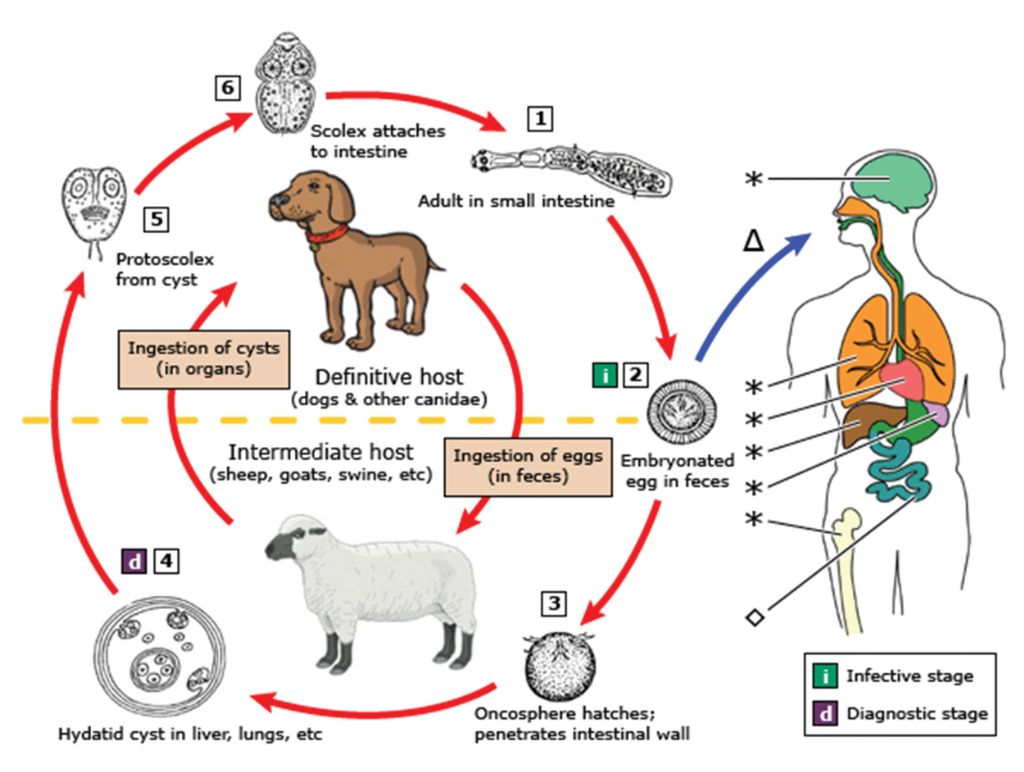Be aware of the preventions for hydatids
Dr Jeff Cave, Senior Veterinary Officer, Agriculture Victoria
A peer-reviewed study has found hydatid cysts in eight per cent of cattle carcasses at a major abattoir in eastern Australia. This is consistent with data from a major Victorian abattoir, which means hydatids are a significant cause of condemnation of offal. More importantly, hydatids remain a threat to human health. In the past, hydatids were a significant cause of illness in Australian rural communities. This was largely due to the practice of feeding the offal of sheep to farm dogs, the absence of treatment of tapeworm in farm dogs, and the close physical connection between farmers and their dogs. Over time, the incidence of hydatids has decreased to the point that Tasmania and New Zealand are now provisionally free of hydatids. An understanding of the hydatid life cycle may help explain why this is difficult to achieve in mainland Australia.
The hydatid lifecycle involves two stages. The adult hydatid tapeworm lives in the intestine of dogs and dingos (and foxes to a lesser extent). The adult tapeworm produces eggs that are passed in the dog or dingo’s droppings. When sheep, kangaroos and cattle ingest contaminated dog or dingo droppings, they become infected. The hydatids then develop into their immature stage as watery cysts in the soft tissues such as the liver of those animals. When a dog or dingo ingests raw offal or dead stock that contains the immature cysts, they become infected completing the lifecycle.
Unfortunately, humans can become infected in the same way as sheep, cows, or kangaroos if they are in close contact with infected dogs. Children are at particular risk due to their close contact with dogs and their tendency to transfer eggs to their mouths. When a person becomes infected, cysts may develop in the liver, lungs, or brain. The consequences of this may be fatal. The only treatment in humans is a radical surgery to remove the cysts.
Tasmania, was able to eradicate hydatids because they didn’t have wild dogs, dingos and foxes, and there was no involvement of wildlife. Its eradication program was based on treating infected dogs with praziquantel and denying dogs access to the offal of sheep, cattle, goats and pigs.
You can readily prevent hydatid disease in the same way by:
- worming your dogs regularly with an all wormer that is effective against the hydatid tapeworm
- never feeding raw offal to dogs
- promptly disposing of all dead stock
- keeping dogs kennelled or chained when not working to prevent them from finding offal or dead stock
- restricting your dog’s access to household vegetable gardens and washing all vegetables thoroughly
- ALWAYS washing your hands after handling dogs and before eating, etc.
